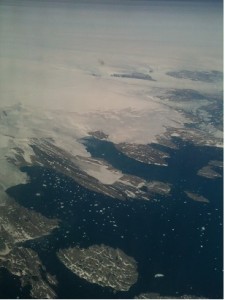First, on the upside, in 2016 the world finally could agree on a climate action accord. The accord sets a goal of arresting global warming below 2C. Considering how many times the world has tried to come to a ratified agreement, this is a major milestone in combating global warming.
Now for the not-so-good news…
It was thought that global warming had had a hiatus in the first decade of this century. Recent analysis indicates not so. New measuring methods, which have an intrinsic lower bias value, caused averaged data to be lower. When temperature analysis is analyzed within categories of measuring devices, the data indicates an ever increasing temperature!
An often overlooked side effect of global warming is the ever increasing ocean acidification. As oceans become more acidic, corals will start to dissolve – thus removing large fish habitats. There is nothing we can do to substitute this loss. The corals that flourish near ocean floor thermal vents where seawater is locally more acidic are proven poor fish habitats. Since these vents have persisted for many millennia, it’s reasonable to expect there’s no solution.
It is a fact that ice coverage at the poles is rapidly decreasing. This winter, temperatures in Nuuk/Greenland measured over +5C when typical temperatures should be -10C or below. In September, on my return trip from Denmark, the ice coverage on the south western part of Greenland was non-existent. Unprecedented.
Still in doubt? Current state of the art computer models that are fed historical data can correctly predict weather phenomena, historical, current and future. In fact, the simulators can render visual cloud covering pictures of the earth that you can readily compare against actual satellite pictures. The pictures eerily match!
Still in doubt? We are now able to measure stratospheric temperatures. Global warming theory predicts that with additional CO2 (carbon dioxide), CH4 (methane/natural gas), and other man made gasses, form a blanket in the atmosphere causing low-altitude planet warming. Conversely, the stratosphere which is above the human caused blanket is predicted to cool. The new stratospheric measurements indicate just that. The stratosphere is cooling!
The arctic tundra contains vast quantities of frozen biodegradable plant material. As arctic temperatures increase, the material will decompose and methane (natural gas) released. There’s no way we can capture the gas, and it will readily accelerate the warming effect. As a global warming gas, methane is 20 times more potent than carbon dioxide, albeit, it quickly breaks down, within 8 years, in the atmosphere. I fear this mechanism has the potential to cause a quick and unanticipated global warming acceleration.
We know from fossilized northern European tree ring studies that climate change can rapidly occur. A massive release of fresh water from the Greenland inland ice sheet, which has already been initiated, will create a fresh water north Atlantic cold pool – effective shutting down the Gulf Stream. The consequences will be immediate and felt worldwide.
Here in California we also see the effect of global warming. A recent drought ended in the winter 2015/16. Wintertime is when we should see a Sierra mountain snow accumulation. This winter, as of this writing, we have had slightly above precipitation – but most has come as rain. Mountain snow is regularly being washed away. Aside from poor Alpine skiing conditions, this matters because we use the snow pack as water storage from year-to-year. Unless we accumulate a decent snow pack, we will have insufficient storage to help us through a multi-year drought.
Mankind has never had to be greatly concerned about nature. There has always been room to expand. Mines to be dug. Land to be plowed. Cities to be build. We are faced with a very different set of survival criteria than our forefathers just 100 years ago. Whereas our ancestors always had the option to immigrate, there’s no such option for people displaced by climate change – there’s nowhere else to go!
For us to survive, we need to quickly switch to renewable living, as well as population control. It’s time to roll up our sleeves and get to work. And yes, the election of Trump can be nothing short of disastrous. His agenda is completely misdirected and will only cause additional hardship.
Cheers & Happy New Year – Mogens Lauritzen



